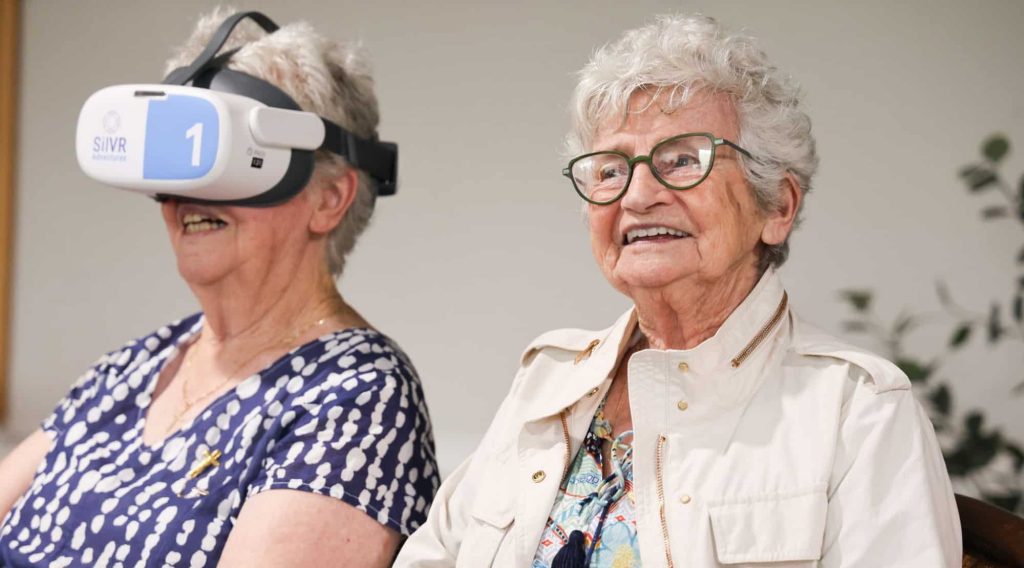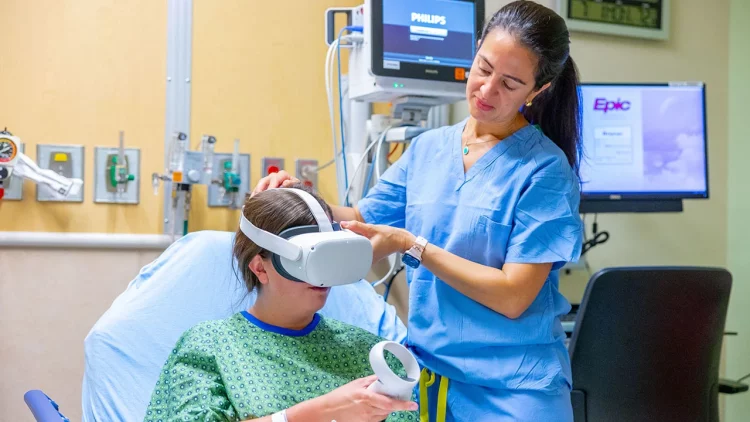In an era where mental health challenges are rising at an unprecedented pace, technological innovation has stepped in to provide new hope and healing. Among the most promising advancements is Virtual Reality Therapy (VRT), a groundbreaking approach that leverages immersive environments to support emotional healing. Unlike traditional forms of therapy, VRT allows individuals to engage with their emotions, triggers, and memories in controlled yet deeply experiential settings. This article explores how virtual reality is being applied in the treatment of emotional disorders such as anxiety, PTSD, and phobias, and why it may revolutionize the future of psychological care.
Understanding Virtual Reality Therapy
Virtual Reality Therapy is a psychotherapeutic technique that uses computer-generated environments to simulate real-life scenarios or imagined situations. These immersive experiences are delivered through head-mounted displays, often accompanied by sensors that track body movement or physiological responses. The goal is not to replace traditional therapy, but to enhance it by providing safe exposure, behavioral rehearsal, and emotional processing in ways that were previously impossible.
Unlike video games or entertainment-driven VR, therapeutic VR is designed with clinical outcomes in mind. It is structured, repeatable, and tailored to the individual’s emotional needs. VRT can be conducted in a therapist’s office, remotely through teletherapy platforms, or in specialized clinics.
The Science of Immersion and Emotional Engagement
Immersion is a defining strength of VR. When users are enveloped in a virtual world, their brains often respond as though the experience is real. This sense of presence—being “in” the virtual space—activates neural and emotional circuits similarly to real-life situations. This effect is particularly useful in treating emotional disorders, where healing often depends on confronting and reprocessing difficult experiences.
For instance, a veteran with PTSD might struggle to talk about combat trauma in a traditional therapy session. But in a virtual environment, they can revisit key scenes gradually and safely, guided by a therapist, until desensitization and emotional processing occur. Studies using functional MRI (fMRI) have shown that exposure to VR environments activates regions of the brain associated with emotional memory and fear extinction—key mechanisms in recovery from trauma.
Treating Anxiety Through Gradual Exposure
One of the most validated uses of VRT is in the treatment of anxiety disorders, particularly through exposure therapy. Traditional exposure therapy involves confronting feared situations or stimuli either in real life (in vivo) or through mental imagery. However, real-life exposure can be logistically difficult and emotionally overwhelming, while imagined exposure may not be vivid enough to produce therapeutic effects.
Virtual reality offers a bridge between these two extremes. For individuals with social anxiety, VR can simulate scenarios like public speaking, job interviews, or crowded parties. For those with specific phobias—such as fear of flying, heights, or spiders—virtual simulations allow for repeated, graded exposure with real-time support from a therapist.
This controlled exposure helps reduce avoidance behavior and teaches new emotional responses. Over time, individuals experience decreased fear responses, increased confidence, and improved quality of life. Because VR scenarios are customizable, therapists can adjust intensity levels to match the patient’s readiness and progress.
PTSD and the Power of Reprocessing Trauma
Post-Traumatic Stress Disorder (PTSD) presents complex challenges for treatment. Sufferers often experience flashbacks, nightmares, hypervigilance, and emotional numbness. Virtual Reality Exposure Therapy (VRET) is particularly well-suited for addressing these symptoms. Developed and tested extensively with military veterans, VRET immerses patients in realistic simulations of traumatic events while providing therapeutic support.
Unlike imagining or recalling traumatic events, VR exposure allows patients to relive the memory in a structured environment. A therapist can pause, rewind, or change the scene based on the patient’s emotional response. This enables gradual reprocessing of traumatic memories with a sense of safety and control, key elements in trauma recovery.
Programs like BRAVEMIND—developed at the University of Southern California’s Institute for Creative Technologies—have shown strong results in helping veterans overcome PTSD. By integrating narrative therapy with VR, patients create a coherent story of their trauma, reducing the fragmented, intrusive nature of traumatic memories.

Virtual Reality in Cognitive Behavioral Therapy (CBT)
Cognitive Behavioral Therapy is a gold-standard treatment for many emotional disorders, and VR can amplify its impact. In VR-assisted CBT, users are guided through exercises that challenge negative thoughts and reinforce healthy behaviors while interacting with simulated environments. For example, someone with agoraphobia may be gradually exposed to larger crowds or unfamiliar public spaces, practicing relaxation and self-talk techniques taught in therapy.
VR also facilitates role-playing scenarios. Individuals with generalized anxiety or interpersonal difficulties can rehearse conflict resolution, assertiveness, or emotional expression in virtual conversations. These practice sessions allow for real-time feedback and emotional rehearsal, which can speed up skill acquisition and confidence-building.
Reducing Depression and Enhancing Mood
While VRT’s primary evidence base lies in anxiety and trauma treatment, emerging studies suggest it may also help individuals with depression. One mechanism is through behavioral activation—the idea that engaging in pleasurable or meaningful activities improves mood. VR experiences that simulate walks in nature, art creation, or guided relaxation can provide a powerful emotional lift, especially for those unable to leave home due to low motivation or physical limitations.
Additionally, some VR programs focus on cultivating mindfulness and compassion. Virtual guided meditations, immersive body scans, or environments designed to evoke awe (such as floating through space or watching bioluminescent underwater scenes) can shift attention away from ruminative thoughts and toward present-moment awareness. These experiences, when combined with therapeutic guidance, may help interrupt depressive patterns.
Accessibility, Affordability, and Ethics
As with any mental health intervention, accessibility and ethical implementation are crucial. The cost of VR headsets and software has declined dramatically, making at-home or clinic-based VR therapy more feasible. However, some barriers remain, including the need for tech support, insurance coverage, and clinician training.
Privacy is another key concern. VR systems often collect biometric data—such as gaze tracking, heart rate, or emotional response patterns—to personalize therapy. This data must be protected under strict guidelines to ensure user confidentiality and safety.
It is also essential that VRT be administered or supervised by licensed mental health professionals. While the technology is compelling, it is not a substitute for clinical judgment. Emotional reactions can be intense, and users must have support in processing them appropriately.
Emerging Innovations and Future Directions
The future of VR therapy is evolving rapidly. New advancements include:
- Haptic feedback, allowing users to feel virtual objects, enhancing realism
- AI-driven avatars that act as virtual coaches or therapists
- Biofeedback integration, where physiological responses (like heart rate) influence the virtual environment in real time
- Multiplayer environments for group therapy or family-based interventions
Researchers are also exploring the use of VR for treating addiction, eating disorders, OCD, and grief. Combined with machine learning, VR may one day predict emotional states and adjust therapy dynamically, creating highly personalized healing journeys.
A Complement, Not a Replacement
Despite its potential, it’s important to remember that VRT is not a magic bullet. It should be seen as a complement to talk therapy, medication, and lifestyle changes—not a replacement. For some individuals, the immersive nature of VR may be overwhelming or contraindicated due to psychosis or dissociation.
Nonetheless, for many people, especially digital natives, the ability to confront and process emotional challenges in a controlled, engaging environment represents a powerful evolution in care. VR makes therapy feel more real, more relevant, and more accessible.
Empowering Emotional Healing Through Innovation
Virtual Reality Therapy bridges the gap between imagination and experience. It offers a new frontier where emotional healing becomes an interactive, empowering process. Whether facing fear, trauma, anxiety, or disconnection, individuals can now engage in therapy that meets them where they are—and guides them, step by step, into where they hope to be.
As research continues to validate its effectiveness, and as technology becomes even more integrated into daily life, VRT holds the promise not only to heal minds but to reshape how we understand and experience emotional well-being in the modern age.











































